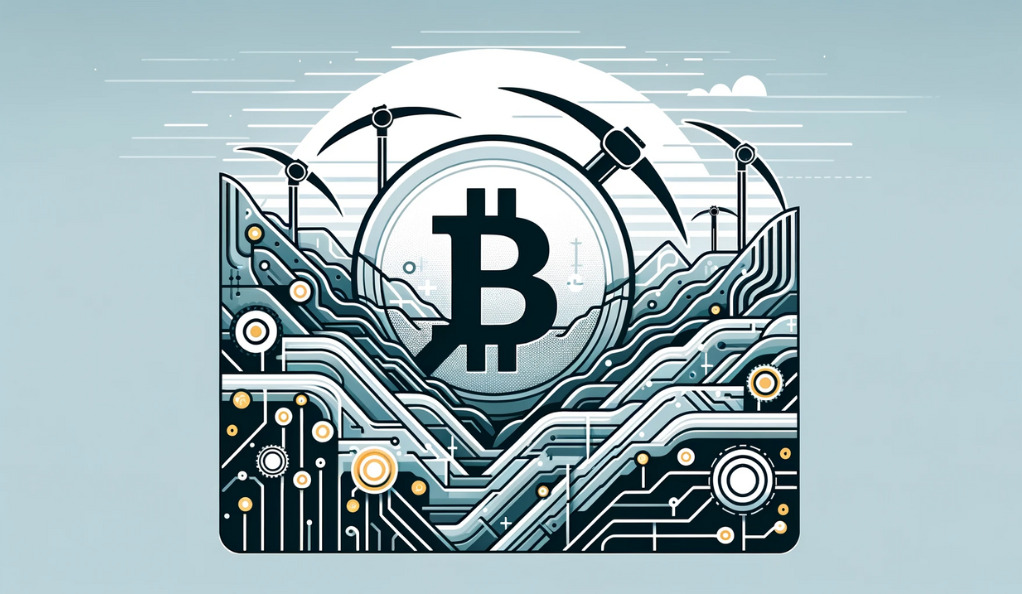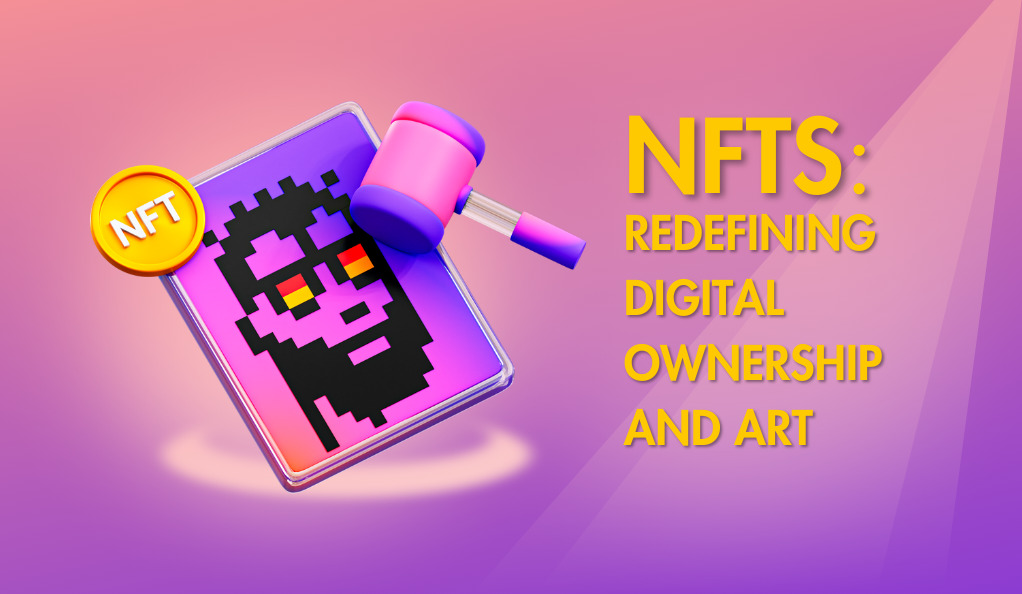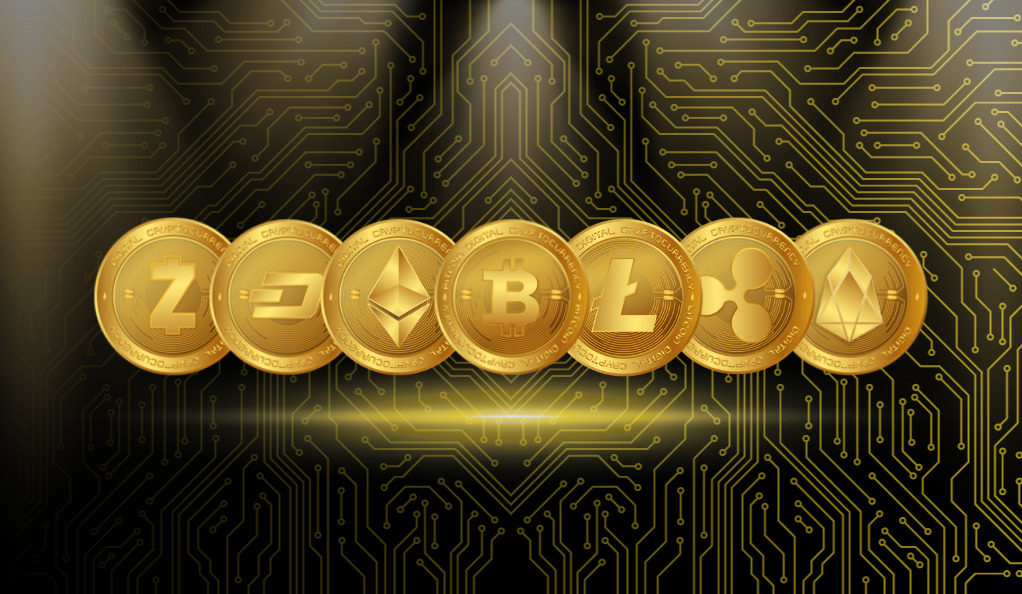Welcome to the dynamic and evolving world of cryptocurrency, a digital frontier that is reshaping the way we think about finance, investment, and the very concept of money. As we embark on this journey into the crypto realm, it’s crucial to arm ourselves with knowledge. Understanding the key terminology is the first step towards demystifying this complex yet fascinating universe. Whether you’re a curious observer, an aspiring investor, or just seeking to understand the basics, this guide is tailored for you.
In this article, we dive into the top 10 essential cryptocurrency terms every beginner should know. These terms are the building blocks that will help you navigate the cryptocurrency landscape with greater confidence and understanding. So, let’s begin our exploration.
Blockchain: The Foundation of Cryptocurrency
Definition and Significance
At the heart of cryptocurrency is a revolutionary technology known as the blockchain. A blockchain is essentially a digital ledger—a continuously growing list of records, called blocks, which are linked and secured using cryptography. Each block typically contains a cryptographic hash of the previous block, a timestamp, and transaction data, making it extremely secure and resistant to alteration.
How It Underpins Cryptocurrencies
Blockchain technology offers several key features that make it integral to cryptocurrencies:
- Decentralization: Unlike traditional banking systems, blockchain operates on a decentralized network of computers. This decentralization means no single entity has control over the entire network, making it more resistant to censorship and central points of failure.
- Transparency and Security: Every transaction on a blockchain is recorded and can be viewed by anyone, ensuring transparency. Furthermore, the use of cryptography for securing transactions makes it highly secure against fraud and hacking.
- Immutability: Once a transaction is added to a blockchain, it cannot be altered or deleted. This immutability ensures the integrity of the transaction history, building trust among users.
- Consensus Mechanisms: Blockchain networks use various consensus mechanisms, like Proof of Work (PoW) or Proof of Stake (PoS), to agree on the validity of transactions. These mechanisms ensure that all participants in the network have a common view of the ledger.
Applications Beyond Cryptocurrency
While blockchain is most commonly associated with cryptocurrencies like Bitcoin and Ethereum, its potential applications extend far beyond. Various industries are exploring blockchain for use cases like supply chain management, voting systems, and identity verification, thanks to its security and transparency features.
Altcoin: Beyond Bitcoin – Understanding Alternative Cryptocurrencies
What Are Altcoins?
When venturing into the world of cryptocurrency, one quickly encounters the term “altcoin.” This term is a portmanteau of “alternative” and “coin,” signifying any cryptocurrency that isn’t Bitcoin. Since Bitcoin’s emergence in 2009, thousands of alternative cryptocurrencies with various functions and specifications have been developed.
The Role and Importance of Altcoins
Altcoins were created to improve upon or serve different purposes than Bitcoin. Here’s a breakdown of their roles:
- Innovation and Experimentation: Many altcoins are developed to experiment with new ideas and technologies, which can’t be done on Bitcoin’s relatively conservative and unchangeable platform. For instance, Ethereum introduced smart contracts, which have applications beyond simple transactions.
- Filling Gaps Left by Bitcoin: Some altcoins aim to address perceived limitations of Bitcoin, such as transaction speed, privacy, and environmental sustainability. For example, Litecoin was designed to process transactions faster, while Monero focuses on enhanced privacy features.
| Altcoin | Launch Year | Unique Feature |
|---|---|---|
| Ethereum (ETH) | 2015 | Smart contracts and decentralized applications (dApps) |
| Ripple (XRP) | 2012 | Fast international transactions for banks |
| Litecoin (LTC) | 2011 | Faster transaction times than Bitcoin |
| Cardano (ADA) | 2017 | Focus on security and sustainability |
Choosing the Right Altcoin
With thousands of altcoins in the market, choosing the right one to invest in or use can be overwhelming. Here are some tips:
- Research the Purpose: Understand the specific problem the altcoin aims to solve and its potential market.
- Check the Development Team: Look into the team behind the altcoin. A strong, experienced team may indicate a more reliable and innovative project.
- Community and Support: A strong, active community can be a good indicator of the altcoin’s potential and sustainability.
- Market Capitalization and Liquidity: Higher market cap and liquidity often suggest a more stable and established altcoin.
Crypto Wallets: Your Digital Safe for Cryptocurrencies
Understanding Crypto Wallets
In the digital world of cryptocurrencies, a crypto wallet is essential for managing and securing your digital assets. However, a common misconception is that these wallets store physical coins. In reality, a crypto wallet stores cryptographic keys – both public and private – that allow users to send, receive, and monitor their cryptocurrencies.
Types of Crypto Wallets

Crypto wallets can be broadly categorized into two types: hot wallets and cold storage.
- Hot Wallets: These are connected to the internet and provide convenient access to your assets. They are ideal for regular transactions but are more vulnerable to cyber threats due to their online nature.
- Cold Storage: This refers to keeping a wallet completely offline, which significantly enhances security. Cold storage options include hardware wallets (like USB devices) or paper wallets (where keys are written down or printed).
Choosing the Right Crypto Wallet
Key Features to Consider
- Security: Look for wallets with robust security measures like two-factor authentication and multi-signature support.
- User Interface: Choose a wallet with an easy-to-navigate interface, especially if you’re a beginner.
- Currency Support: Ensure the wallet supports the cryptocurrencies you want to use or invest in.
- Backup Features: Reliable backup options are crucial for recovering your assets in case of device loss or failure.
Importance of Security in Cryptocurrency Storage
The decentralized nature of cryptocurrencies means that security is primarily the user’s responsibility. A compromised wallet can lead to irreversible loss of assets. Hence, understanding how crypto wallets work and choosing the right one for your needs is crucial in the cryptocurrency ecosystem.
The Power of Decentralization in Crypto
Unpacking Decentralization
Decentralization is a foundational concept in the world of cryptocurrency, representing a shift away from traditional centralized financial systems. At its core, decentralization refers to the distribution of power away from a central authority. In the context of cryptocurrencies, this means that the control and management of transactions are spread across a network of computers, rather than being concentrated in a single entity like a bank.
Key Aspects of Decentralization in Cryptocurrency
- Increased Security and Reduced Risk: By distributing data across a network, cryptocurrencies are less vulnerable to cyber attacks and system failures. There’s no single point of failure.
- Transparency and Trust: Decentralized networks operate on open-source software, allowing anyone to verify transactions and the software’s integrity.
- Empowerment and Inclusivity: Decentralization allows users to participate directly in the financial system without the need for intermediaries, potentially increasing financial inclusion.
Decentralization in Action: How It Works
The best way to understand decentralization in cryptocurrency is to see how it operates in a blockchain network:
- Transaction Initiation: A user initiates a transaction, such as sending Bitcoin to another user.
- Network Distribution: The transaction information is broadcast to a network of computers (nodes).
- Verification and Validation: These nodes validate the transaction through consensus mechanisms like Proof of Work or Proof of Stake.
- Addition to the Blockchain: Once verified, the transaction is added to a block in the blockchain, viewable by all network participants.
Mining: The Backbone of Cryptocurrency Networks
What is Cryptocurrency Mining?

Cryptocurrency mining is the process by which new coins are created and transactions are verified and added to the blockchain ledger. In the context of Bitcoin and many other cryptocurrencies, mining involves solving complex mathematical problems with cryptographic hash functions.
The Role of Miners
Miners are individuals or companies that use computational power to mine cryptocurrencies. They play a crucial role in:
- Validating Transactions: Miners verify the legitimacy of transactions, helping to prevent issues like double-spending.
- Maintaining the Network: By validating transactions, miners contribute to the security and ongoing functionality of the blockchain.
- Creating New Coins: Mining is the process through which new units of cryptocurrency are entered into circulation.
How Does Mining Work?
- Transaction Verification: Miners select transactions from a pool and check their validity.
- Solving the Puzzle: Miners compete to solve a cryptographic puzzle, which requires computational power.
- Adding to the Blockchain: The first miner to solve the puzzle gets to add a new block of transactions to the blockchain.
- Receiving Rewards: The successful miner receives a reward in the form of new cryptocurrency coins and transaction fees.
Challenges and Considerations in Mining
- Energy Consumption: Cryptocurrency mining, especially for coins like Bitcoin, can be energy-intensive, raising environmental concerns.
- Difficulty and Profitability: The difficulty of mining increases as more miners join the network, impacting profitability.
- Centralization Risks: Large mining pools can potentially influence the network, which is a concern for decentralization.
Smart Contracts: Automating Trust and Agreement in the Blockchain
Understanding Smart Contracts
Smart contracts are self-executing contracts with the terms of the agreement directly written into lines of code. They run on blockchain networks, like Ethereum, and automatically enforce and execute the terms of a contract when predetermined conditions are met. This technology represents a significant shift from traditional contracts, offering a more efficient, transparent, and secure way of conducting agreements.
How Do Smart Contracts Work?
The process of a smart contract can be broken down into a few key steps:
- Agreement Creation: Parties define the terms of their agreement, which are then encoded into a smart contract.
- Deployment on Blockchain: The smart contract is deployed on a blockchain, making it immutable and distributed.
- Automatic Execution: When predefined conditions are met (e.g., a date is reached, payment is made), the smart contract automatically executes the corresponding terms (e.g., release funds, register ownership).
- Verification and Enforcement: The blockchain network verifies the transaction and enforces the outcome, ensuring compliance without intermediaries.
Applications of Smart Contracts
Smart contracts have a wide range of applications across various sectors:
- Finance: Streamlining payments, loans, and insurance claims.
- Real Estate: Automating property sales and lease agreements.
- Supply Chain: Tracking the production, shipment, and receipt of products.
- Voting Systems: Ensuring secure and transparent electoral processes.
Challenges and Considerations
While smart contracts offer numerous benefits, they are not without challenges:
- Code Vulnerabilities: Errors in code can lead to unintended consequences, which, once deployed, cannot be easily rectified due to the immutable nature of blockchain.
- Legal Recognition: The legal status of smart contracts varies by jurisdiction, and traditional legal systems are still adapting to these digital agreements.
- Complexity and Accessibility: Creating and understanding smart contracts require technical expertise, potentially limiting accessibility for non-technical users.
DeFi: Revolutionizing Finance with Blockchain Technology

Decentralized Finance, commonly referred to as DeFi, is an emerging financial technology based on secure distributed ledgers similar to those used by cryptocurrencies. It represents a shift from traditional, centralized financial systems to peer-to-peer finance enabled by decentralized technologies built on the Ethereum blockchain. DeFi extends the use of blockchain from simple value transfer to more complex financial use cases.
Key Components of DeFi
DeFi is built around several key components that make up its ecosystem:
- Smart Contracts: Automated contracts that execute financial transactions and agreements without intermediaries.
- Decentralized Applications (DApps): Applications that run on a blockchain network, enabling various financial services.
- Assets and Tokenization: Digital representation of both tangible and intangible assets.
- Protocols: Rules that define how various DeFi services interact and function.
How DeFi is Changing the Financial Landscape
DeFi is making significant inroads in various aspects of finance:
- Lending and Borrowing: DeFi platforms enable users to lend or borrow funds from others, bypassing traditional financial intermediaries like banks.
- Asset Trading: Decentralized exchanges (DEXs) allow for the trading of assets without the need for a centralized authority.
- Yield Farming and Liquidity Mining: Providing liquidity to DeFi platforms in exchange for interest or rewards.
- Insurance: Offering decentralized insurance products without the need for traditional insurance companies.
Challenges Facing DeFi
While DeFi offers many advantages, there are challenges to consider:
- Regulatory Uncertainty: The lack of clear regulatory frameworks in many regions poses risks for DeFi participants.
- Security Risks: While blockchain is secure, DeFi platforms can be susceptible to coding vulnerabilities.
- Market Volatility: DeFi markets can be highly volatile, presenting risks for investors.
- Complexity: The complexity of DeFi can be a barrier to entry for less technically inclined users.
NFTs: Redefining Digital Ownership and Art

What Are Non-Fungible Tokens (NFTs)?
Non-Fungible Tokens, or NFTs, represent a major breakthrough in the use of blockchain technology. Unlike cryptocurrencies like Bitcoin or Ethereum, which are fungible and can be exchanged on a one-to-one basis, NFTs are unique digital assets. Each NFT has distinct properties and isn’t interchangeable with another. This uniqueness is what makes NFTs particularly suitable for representing ownership of unique items, both digital and physical.
How Do NFTs Work?
NFTs are typically created, or ‘minted’, on blockchain platforms that support smart contracts, such as Ethereum. They are encoded with the same underlying software as many cryptocurrencies. However, each NFT has a unique identifier that sets it apart. This identifier, along with metadata, ownership history, and other details, is stored on the blockchain, ensuring authenticity and ownership.
Applications of NFTs
NFTs have a wide range of applications:
- Digital Art and Collectibles: Artists can tokenize their work as NFTs, allowing for digital ownership of their creations.
- Gaming Items: Unique in-game items can be bought, sold, and owned as NFTs.
- Real Estate and Asset Tokenization: Physical assets, including real estate, can be represented as NFTs, simplifying and securing the process of buying and selling.
The NFT Market Boom
The NFT market has witnessed explosive growth, with high-profile sales capturing headlines. This boom has attracted artists, collectors, and investors alike, intrigued by the possibilities of digital ownership and the democratization of art collection.
Challenges and Considerations
While NFTs open up new opportunities, they also present challenges:
- Environmental Concerns: The energy-intensive nature of blockchain networks, especially those that use Proof of Work, raises environmental concerns.
- Market Volatility: The NFT market can be highly speculative and subject to rapid price fluctuations.
- Intellectual Property Issues: The intersection of NFTs and intellectual property rights is still a complex and evolving area.
ICOs: The Gateway to Cryptocurrency Funding
Introduction to Initial Coin Offerings (ICOs)
An Initial Coin Offering (ICO) is a fundraising mechanism where new projects sell their underlying cryptocurrency tokens in exchange for Bitcoin, Ethereum, or other cryptocurrencies. It’s somewhat similar to an Initial Public Offering (IPO) in the stock market, but ICOs are typically used to launch new cryptocurrencies or crypto-related projects.
How ICOs Work
- Proposal and Whitepaper: The project team proposes a new idea and publishes a whitepaper detailing the project’s concept, technology, and terms of the ICO.
- Token Creation: The project creates a set of tokens to be sold, which can have different utilities such as granting access to a service or representing a share in the project.
- Public Sale: Investors buy the tokens, often using other cryptocurrencies like Bitcoin or Ethereum.
- Funds Allocation: The funds raised are used to develop and expand the project.
Advantages of ICOs
- Access to Capital: ICOs provide a new way for projects to raise funds without the need for traditional venture capital or banking systems.
- Global Reach: Anyone with internet access can participate, offering global exposure and investment opportunities.
- Liquidity: ICO tokens can sometimes be traded on cryptocurrency exchanges, offering liquidity to investors.
| Risk | Description |
|---|---|
| Regulatory Uncertainty | ICOs operate in a regulatory grey area, which could lead to future legal challenges. |
| Fraud and Scams | The lack of regulation and the ease of creating ICOs have led to numerous scams. |
| Market Volatility | ICO tokens can be highly volatile and may lose value rapidly. |
Important Considerations for Investors
- Research: Thoroughly research the project’s whitepaper, team, and feasibility before investing.
- Regulatory Landscape: Be aware of the regulatory environment in your country regarding ICOs.
- Risk Assessment: Understand the high-risk nature of investing in ICOs and only invest what you can afford to lose.
Market Cap: Understanding the Scale of Cryptocurrencies

Defining Market Cap in Cryptocurrency
Market Capitalization, commonly referred to as Market Cap, is a key metric in the cryptocurrency world. It represents the total market value of a cryptocurrency’s circulating supply. In simpler terms, it’s the price of a single token multiplied by the total number of tokens in circulation. Market Cap is an essential indicator for assessing the size, stability, and growth potential of a cryptocurrency.
Calculating Market Cap
The formula for calculating Market Cap is straightforward:
Market Cap=Price per Token×Total Circulating SupplyMarket Cap=Price per Token×Total Circulating Supply
For example, if a cryptocurrency has 1 million tokens in circulation and each token is worth $10, the Market Cap would be $10 million.
Importance of Market Cap in Cryptocurrencies
- Size and Dominance: Market Cap helps in determining the size and dominance of a cryptocurrency in the market. Larger Market Caps generally indicate more widely adopted and stable currencies.
- Investment Insight: It provides insights into the performance and potential of a cryptocurrency, helping investors make informed decisions.
- Market Trends: Changes in Market Cap can indicate broader market trends and investor sentiment.
Categories Based on Market Cap
Cryptocurrencies are often categorized based on their Market Cap:
- Large-Cap: $10 Billion and above, generally considered safer investments.
- Mid-Cap: $1 Billion to $10 Billion, offer a balance between risk and potential growth.
- Small-Cap: Below $1 Billion, higher potential for growth but with increased risk.
Market Cap vs. Token Price
It’s important to distinguish between Market Cap and token price. A high token price doesn’t necessarily mean a cryptocurrency is valuable; it must be considered in relation to the total supply. For instance, a token priced at $100 with a circulating supply of 1 million has a lower Market Cap than a token priced at $10 with a circulating supply of 20 million.
Conclusion
In summary, our exploration of cryptocurrency terms from blockchain to NFTs and DeFi unveils the richness of this digital landscape. Understanding these key concepts is crucial as they form the backbone of a rapidly evolving cryptocurrency world. As you delve deeper, keep learning and stay updated with the latest trends. This foundational knowledge is your first step towards confidently navigating the exciting realm of cryptocurrency, a field ripe with opportunities and innovations.
